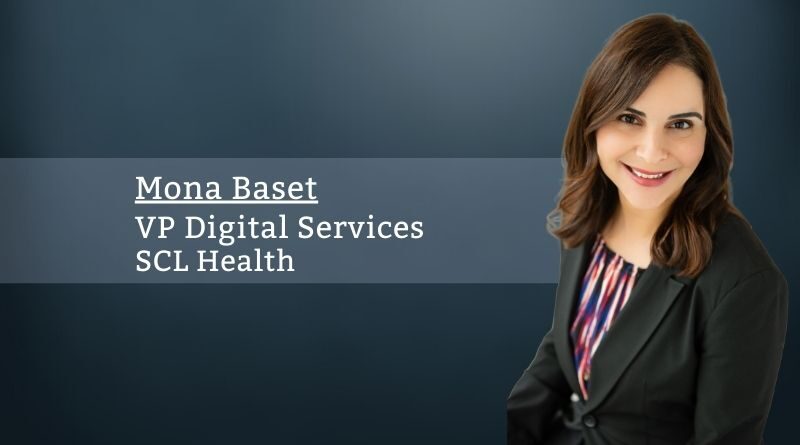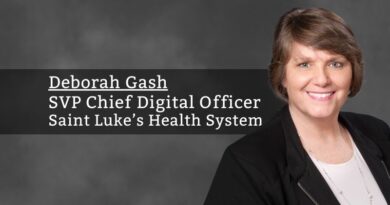Lessons in Healthcare Consumer Experience From a Former Banker
By Mona Baset, VP Digital Services, SCL Health
Earlier in my career, I spent almost a decade working in a variety of marketing roles at Bank of America. Those years were extremely dynamic for Bank of America and the financial services industry in general. I could not have foreseen the similar transformation that would occur in healthcare when I returned to that industry in 2013. The biggest difference is that while the financial services transformation was in its very advanced stages, healthcare was just getting started.
SCL Health recently launched a new consumer app that extends functionality from Epic MyChart in a streamlined, consumer-friendly experience.
It’s complicated, confusing, and not always transparent. Everything seems designed from an operational perspective, from hours of operation and access to information to the amount of paperwork required and confusing language. That was banking back then and is generally healthcare today.
I saw several transformations during my time in the financial services industry, and I continue to see advancements, all focused on creating simpler, differentiated experiences for consumers. I observed some key approaches that helped make that happen:
- A complete shift in mindset to focus on the consumer.
- A “meet consumers where they are” culture.
- The advancement of digital capabilities to give consumers more control and increased access.
- The adoption of human-centered design to improve and innovate.
Shift the mindset. Financial services is a highly regulated industry, and that often translated to an extremely unpleasant experience for customers. Piles of paperwork, disparate systems and platforms, confusing fee structures, and so much more. At some point, there was a decision to simplify. That decision created a cascade of new capabilities and processes that offered a better experience. A similar shift is occurring in healthcare. When I led a variety of marketing teams at another healthcare organization, we started using the term “consumer” instead of “patient,” and something magical happened. A patient was someone who came to us when they were sick or hurt and to whom we delivered amazing care. A consumer was someone we had to work hard to attract and retain. Experience is a differentiator in many industries, including healthcare, and it takes focus and discipline to build incredible experiences.
Meet consumers where they are. It wasn’t only about extending hours in branches and opening on Saturdays. Banks began looking at their expansive network of ATMs and introduced more capabilities, including depositing checks, customizing denominations for withdrawals, and buying stamps. That set the stage nicely for the first browser-based online banking experiences. Consumers could check their balances, pay bills online, and transfer money between accounts. Those offerings also made consumers stickier – they invested time to set up online profiles and the companies they pay bills to, and starting over somewhere else wasn’t very appealing. Healthcare has started to meet consumers where they are, and the pandemic accelerated many early efforts. Browser-based portals give consumers the ability to set up profiles, communicate directly with their care teams, schedule and cancel appointments, see test results and get care online. Video visits and e-visits give consumers the ability to get care from anywhere and anytime – all they need is a computer or smartphone.
Advance digital capabilities. Browser-based consumer experiences quickly transitioned to mobile apps that offered an even simpler experience. Most banking customers will tell you they can’t remember the last time they visited a branch. Mobile check deposits, FICO score tracking, sending money to friends and family, and engaging with a virtual assistant are just the beginning. It seems that every day something new is offered. Health systems are starting to offer similar experiences in the form of new mobile apps. SCL Health recently launched a new consumer app that extends functionality from Epic MyChart in a streamlined, consumer-friendly experience. It also offers additional capabilities, including accessing health tips and information, and an easy unauthenticated experience that allows consumers to find a location and schedule with a new provider. We are also managing a road map of future enhancements for the app, including a virtual assistant to answer key questions quickly and easily, and symptom checking.
Use human-centered design to continue to improve and innovate. Also known as design-thinking, human-centered design can identify the true consumer need and develop innovative solutions. The process starts with deep empathy through observation and directed interviews. Open your eyes and ears, and your consumers will tell you everything you need to know to improve experiences and deliver differentiated products and services. In the early 2000s, Bank of America partnered with IDEO, the design firm that pioneered human-centered design. There is a lot of information published about this engagement, but briefly, they wanted to spend time understanding moms and their role as the financial manager of their households. They observed moms going about their banking tasks, including paying bills. They noticed that some moms rounded up the number they wrote the check for in their checkbooks, which gave them a little extra money in their checking accounts to cover overages, and made the math easier. IDEO used these observations to help Bank of America develop a product called Keep the Change, which would round up purchases made with debit cards to the next dollar. That extra change would automatically be transferred to a savings account, and the bank would match the money to a certain dollar amount. After years of stagnation in banking products and services, Keep the Change was an interesting and useful new option. We can do the same in healthcare. Watch consumers use your app and your website. Follow them as they visit one of your clinics. During one of our empathy interviews, we discovered that many older consumers felt they weren’t very tech-savvy, but then clearly demonstrated they were comfortable using digital tools. This observation helped us break down stereotypes surrounding older patients and their use of technology.
Where to start? A good place to start as you shift to a consumer mindset is to develop guiding principles for your work. Here are ours:
- Make experiences easy and low-effort
- Focus on the user and their needs, not organizational processes
- Leverage the smallest number of connected platforms needed
- Personalize experiences based on deep knowledge of the consumer
- Provide options to engage
What’s next for financial services? As an outsider now, I see complex digital assistant development, radical simplification of experiences, dashboards to monitor and manage spending, personalized insights, and more. Can healthcare be challenged to do the same – or even more?



